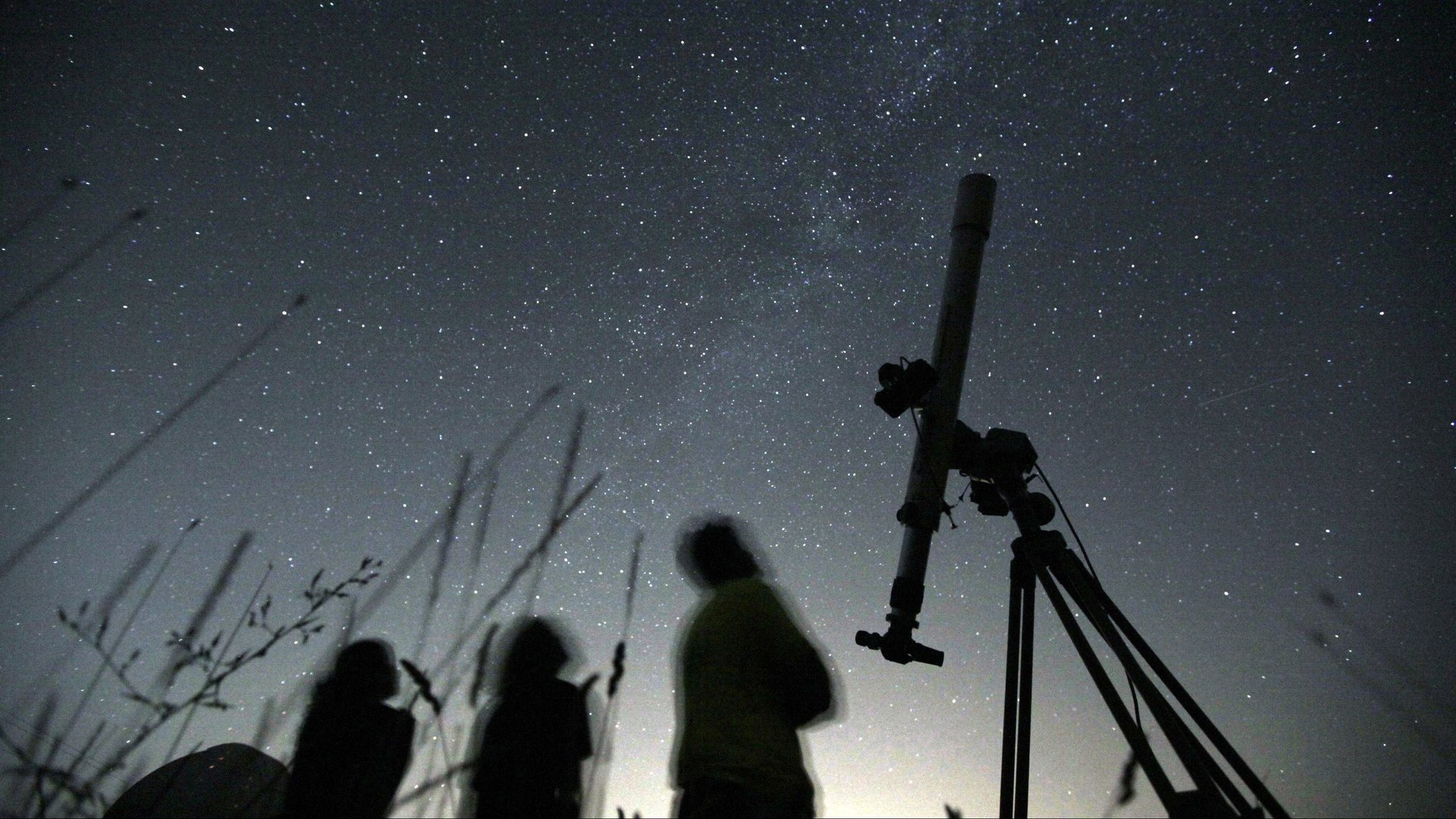Scientists are using the cold of outer space to rethink air conditioning
The trick to creating cool air without any electricity has been hiding in plain sight.


The trick to creating cool air without any electricity has been hiding in plain sight.
A California-based company called SkyCool Systems is in the early stages of manufacturing a cooling system that’s more energy efficient than anything humans have used for a century. It’s doing it using radiative cooling, a concept that was used in the Middle East and India hundreds of years ago.
Inventions like this are potential game-changers as the world stares down a growing climate crisis, spurred by emissions pumped into the atmosphere by human activity. Globally, about 12% of non-carbon dioxide emissions can be attributed to refrigeration and air conditioners, according to the US Environmental Protection Agency.
To understand how radiative cooling works, forget for a moment the sun. Think instead about the night sky. Once the sun has set and the cooler evening begins, just about everything on Earth—the soil, the grass, the roofs of homes, even people—give off heat. A lot of that heat rises up into the atmosphere where it effectively transmits out into space, never returning to Earth. The night sky is very chilly, and objects sending heat upward at night send up more heat than the whole sky is sending back down.
Hundreds of years ago, long before refrigeration existed, people in India and Iran used this basic concept to make ice in climates with temperatures above freezing. Water was filled into large and shallow ceramic pools that were surrounded and insulated by hay, and then the pools were left out on clear nights. It sounds counterintuitive, but if the air wasn’t too far above freezing, the heat emitted by the water made it lower in temperature than the surrounding air, allowing it to freeze. It’s the same principle at play when you wake up on a summer morning to find a layer of frost or dew.
Now the people at SkyCool are taking that principle and applying it to the modern era, employing it to reimagine how we cool our homes, data centers, and refrigerators.
While working at Stanford University, SkyCool’s three co-founders—Shanhui Fan, Eli Goldstein, and Aaswath Raman—created a material that helps facilitate the radiative cooling process. Raman has even given a TED Talk describing how the material works. The trick is finding a material with a surface that absorbs, emits, and reflects heat in the right balance.
“The core thing the material does is make this effect useful during the day,” Raman says. “Most materials absorb enough sunlight to totally counteract the cooling effect. That’s been the big issue. You couldn’t do it during the day, when you need cooling the most.”
Their invention looks a lot like a solar panel. A flat metal panel is covered in a sheet of the material—a high-tech film—the trio invented. The material reflects the light and heat of the sun so effectively that the temperature beneath the film can drop 5 to 10-degrees Celsius (9 to 18-degrees Fahrenheit) lower than the air around it. A system of pipes behind the metal panel are exposed to that colder temperature, cooling the fluid inside before it’s sent out to current-day refrigeration systems.
The challenge to getting the SkyCool system implemented is two-fold. First, modern day refrigeration and air conditioning have been optimized over the last century to be extremely cheap. Asking companies to pay extra to build new radiative cooling technology into already-inexpensive systems is a hurdle. The second is related to infrastructure. If SkyCool created its own standalone technology—and the founders say they can—it wouldn’t use the air ducts already designed into buildings. Rather, they’d rely on radiant cooling, which could include cooling ceilings (akin to heated-floor technology) and other designs.
Still, the company feels good about its prospects.
“We’re optimistic because we have a lot of really good customer interest,” Goldstein says. The company has five pilot programs to prove their concept can be applied to real world scenarios, including three in the United States: a convenience store, a data center, and an office building.
While SkyCool sees its technology being deployed alongside current refrigeration systems to make them more efficient, University of Buffalo researchers behind a new study published today in the journal Nature Sustainability think radiative cooling could one day be its own, electricity-free system.
One of the biggest challenges to modern radiative cooling is making sure the film is able to reflect the sun’s heat back into the sky. Normally, thermal emissions travel in all directions. But the group University of Buffalo researchers found a way to beam the emissions in a narrow, upward direction. It allows their system to be more effective in urban environments, with forests of tall buildings and skyscrapers on all sides.
Just how soon this technology might be implemented on a large scale is still undetermined. But the first places could be in new developments, such as government-incentivized sustainable building projects built and designed with climate friendliness in mind.